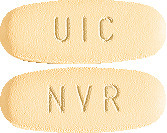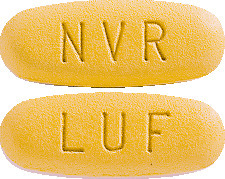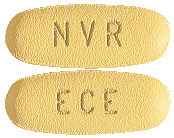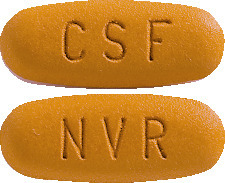SUMMARY CMI
EXFORGE®
Consumer Medicine Information (CMI) summary
The full CMI on the next page has more details. If you are worried about using this medicine, speak to your doctor or pharmacist.
1. Why am I using EXFORGE?
EXFORGE contains the active ingredients Valsartan and Amlodipine Besilate. EXFORGE is used to control high blood pressure, also called hypertension.
For more information, see Section 1. Why am I using EXFORGE? in the full CMI.
2. What should I know before I use EXFORGE?
Do not use if you have ever had an allergic reaction to EXFORGE or any of the ingredients listed at the end of the CMI.
Talk to your doctor if you have any other medical conditions, take any other medicines, or are pregnant or plan to become pregnant or are breastfeeding.
For more information, see Section 2. What should I know before I use EXFORGE? in the full CMI.
3. What if I am taking other medicines?
Some medicines may interfere with EXFORGE and affect how it works.
A list of these medicines is in Section 3. What if I am taking other medicines? in the full CMI.
4. How do I use EXFORGE?
- The usual dose is one tablet a day. Your doctor will tell you how many tablets to take each day. Depending on how you respond to the treatment, your doctor may suggest a higher or lower dose.
- Take this medicine until your doctor tells you to stop even if you feel quite well.
More instructions can be found in Section 4. How do I use EXFORGE? in the full CMI.
5. What should I know while using EXFORGE?
| Things you should do |
|
| Things you should not do |
|
| Driving or using machines |
|
| Looking after your medicine |
|
For more information, see Section 5. What should I know while using EXFORGE? in the full CMI.
6. Are there any side effects?
Common side effects: headache, persistent ringing in the ears, dizziness, tiredness, diarrhoea, constipation or gas, muscle or joint pain, abdominal pain, nausea, vomiting, dry cough, sore throat, croaky voice, runny or blocked nose, blistering skin, difficulty sleeping, feeling anxious or sad, tingling or numbness in the hands or feet, problems with sexual function, breast enlargement in men, unusual hair loss or thinning.
Serious side effects: swelling of hands, feet or limbs, feeling of fast or irregular heartbeat, shortness of breath, tiredness, chest pain, severe dizziness, liver disease with nausea, vomiting, loss of appetite, feeling generally unwell, fever, itching, yellowing of the skin and eyes, and dark coloured urine, constant "flu-like" symptoms
For more information, including what to do if you have any side effects, see Section 6. Are there any side effects? in the full CMI.
FULL CMI
EXFORGE®
Active ingredient(s): Amlodipine besilate/Valsartan
Consumer Medicine Information (CMI)
This leaflet provides important information about using EXFORGE. You should also speak to your doctor or pharmacist if you would like further information or if you have any concerns or questions about using EXFORGE.
Where to find information in this leaflet:
1. Why am I using EXFORGE?
2. What should I know before I use EXFORGE?
3. What if I am taking other medicines?
4. How do I use EXFORGE?
5. What should I know while using EXFORGE?
6. Are there any side effects?
7. Product details
1. Why am I using EXFORGE?
EXFORGE contains the active ingredients Valsartan and amlodipine besilate. EXFORGE belongs to a group of medicines called antihypertensives. These medicines help treat high blood pressure. The ingredients in EXFORGE reduce blood pressure in two different ways:
- Valsartan blocks the effect of angiotensin II, which is a substance in the body that tightens blood vessels and makes your blood pressure rise. When the effect of angiotensin II is blocked, your blood vessels relax and your blood pressure goes down.
- Amlodipine besilate blocks the movement of calcium into the cells of the heart and blood vessels. As a result, they relax blood vessels and increase the supply of blood and oxygen to the heart while reducing its workload.
EXFORGE is used to control high blood pressure, which is also called hypertension.
EXFORGE is used to treat high blood pressure in patients whose blood pressure is not controlled enough with either amlodipine or valsartan on its own.
2. What should I know before I use EXFORGE?
Warnings
Do not use EXFORGE if:
- you are allergic to Valsartan or amlodipine besilate, allergic to medicines belonging to a group of chemicals called dihydropyridines, used to treat blood pressure and other heart problems, or allergic to any of the ingredients listed at the end of this leaflet.
Always check the ingredients to make sure you can use this medicine.
Symptoms of an allergic reaction may include shortness of breath, wheezing or difficulty breathing; swelling of the face, lips, tongue or other parts of the body; rash, itching or hives on the skin - you are pregnant or intending to become pregnant.
- you have severe kidney disease or are having dialysis.
- you have liver problems caused by a blockage in the bile duct or any other severe liver problems.
- you have Cholestasis, which is reduced or stopped bile flow.
- you are also taking other blood pressure lowering medications containing Aliskiren and have type 2 diabetes.
- it is after the expiry date printed on the pack or if the packaging is torn or shows signs of tampering. In that case, return it to your pharmacist for disposal.
Check with your doctor if you have any other medical conditions such as:
- severe kidney problems or received a kidney transplant
- liver problems
- heart problems, including obstructed blood flow through the heart from narrowing of valves (stenosis) or enlarged septum of the heart (HOCM)
- primary hyperaldosteronism (Conn's syndrome), a hormone disorder causing build-up of fluid in the body.
- swelling, mainly of the face and throat, while taking other medicines (including an ACE inhibitor or aliskiren)
- suffering from several episodes of vomiting or diarrhoea or are taking a diuretic (a drug increasing the amount of urine).
Your doctor may want to take special precautions if you have any of the above conditions.
Tell your doctor if you are allergic to any other medicines, foods, dyes or preservatives.
During treatment, you may be at risk of developing certain side effects. It is important you understand these risks and how to monitor for them. See additional information under Section 6. Are there any side effects?
Pregnancy and breastfeeding
Do not take EXFORGE if you are pregnant or intend to become pregnant. EXFORGE is not recommended for use in pregnancy. Like other similar medicines, it could affect your unborn baby.
Talk to your doctor if you are breastfeeding or intend to breastfeed. Ask your doctor about the risks and benefits of taking EXFORGE in this case. It is not known if valsartan or amlodipine, the active ingredients of EXFORGE, pass into the breast milk and could affect your baby.
3. What if I am taking other medicines?
Tell your doctor or pharmacist if you are taking any other medicines, including any medicines, vitamins or supplements that you buy without a prescription from your pharmacy, supermarket or health food shop.
Some medicines may interfere with EXFORGE and affect how it works. You may need to take different amounts of your medicines, or you may need to take different medicines.
These medicines include:
- medicines used to treat high blood pressure and some other heart conditions including fluid tablets or diuretic medicines, ACE-inhibitors, aliskiren and beta blockers
- simvastatin (a medicine used to help lower cholesterol levels), since the dose may have to be reduced when taken with EXFORGE
- some antibiotics (rifamycins), anti-rejection drugs (Cyclosporin), antiretrovirals (Ritonavir) which may increase the effect of EXFORGE
- potassium supplements, salt substitutes containing potassium, or other drugs that may increase potassium levels
- anticonvulsant agents (e.g. carbamazepine, phenobarbital, phenytoin, fosphenytoin, primidone), rifampicin, St. John's wort
- nitroglycerin and other nitrates, or other substances called "vasodilators"
- medicines used for HIV/AIDS (e.g. ritonavir) or for treatment of fungal infections (e.g. ketoconazole)
- anti-inflammatory medicines such as Celebrex, Voltaren and Indocid (NSAIDs) or Selective Cyclooxygenase-2 Inhibitors (Cox-2 inhibitors)
- intravenous dantrolene used to treat malignant hyperthermia
Your doctor may also check your kidney function.
Check with your doctor or pharmacist if you are not sure about what medicines, vitamins or supplements you are taking and if these affect EXFORGE.
Your doctor and pharmacist have a more complete list of medicines to be careful of while taking EXFORGE.
4. How do I use EXFORGE?
Follow carefully all directions given to you by your doctor and pharmacist. These instructions may differ from the information contained in the leaflet.
If you do not understand the instructions on the label, ask your doctor or pharmacist for help.
How much to take
- Your doctor will tell you how many tablets to take each day. The usual dose is one tablet a day.
- Depending on how you respond to the treatment, your doctor may suggest a higher or lower dose.
- Take this medicine until your doctor tells you to stop even if you feel quite well. People who have high blood pressure often feel well and do not notice any signs of this problem.
When to take EXFORGE
- Take it at the same time each day.
- This also helps you remember to take it, especially if you take it as part of your usual routine (i.e. at breakfast time).
How to take EXFORGE
- Swallow the tablet with a full glass of water.
- Always take EXFORGE in the same way, with or without food.
You can take it with or without food but it will work best if you always take it in the same way every day.
If you forget to take EXFORGE
EXFORGE should be used regularly at the same time each day.
If it is almost time for your next dose, skip the dose you missed and take your next dose when you are meant to.
Otherwise, take the dose as soon as you remember and then go back to taking it as you would normally.
Do not take a double dose to make up for the dose you missed.
If you have trouble remembering when to take your medicine, ask your pharmacist for some hints.
If you take too much EXFORGE (overdose)
If you think that you have used too much EXFORGE, you may need urgent medical attention.
You should immediately:
- phone the Poisons Information Centre
(by calling 13 11 26), or - contact your doctor, or
- go to the Emergency Department at your nearest hospital.
You should do this even if there are no signs of discomfort or poisoning.
Keep the telephone numbers for these places handy.
Too much EXFORGE may make you feel dizzy, lightheaded or faint. You may experience rapid, shallow breathing or cold, clammy skin. Your heartbeat may be faster than usual. This is because your blood pressure is too low.
5. What should I know while using EXFORGE?
Things you should do
- If you become pregnant while taking EXFORGE, tell your doctor immediately. You should not be taking this medicine while you are pregnant.
- Tell your doctor if, for any reason, you have not taken your medicine exactly as prescribed. Otherwise your doctor may think that it was not effective and change your treatment unnecessarily.
- Be sure to keep all your doctor's appointments so that your progress can be checked. Do this even if you feel well.
People with high blood pressure often do not notice any signs of this problem. It is important to keep track of your progress. Your doctor will want to check your blood pressure and your kidney and liver function from time to time. - If you are going to have surgery, tell your doctor and anaesthetist that you are taking EXFORGE. EXFORGE may affect some medicines you receive during surgery.
- If you are about to be started on any new medicine, remind your doctor and pharmacist that you are taking EXFORGE.
Things to be careful of
- Avoid eating grapefruit or drinking grapefruit juice. Grapefruit juice can affect the metabolism of some medicines, including amlodipine.
Call your doctor straight away if you notice any of the following:
- signs of allergy such as rash, itching or hives on the skin; swelling of the face, lips, tongue or other parts of the body; fever, shortness of breath, wheezing or troubled breathing.
Remind any doctor, dentist or pharmacist you visit that you are using EXFORGE.
Things you should not do
- Do not use EXFORGE to treat any other complaints unless your doctor says you can.
- Do not give this medicine to anyone else, even if their condition seems to be similar to yours.
Driving or using machines
Be careful before you drive or use any machines or tools until you know how EXFORGE affects you.
EXFORGE may cause tiredness, sleepiness or dizziness in some people. If you have these symptoms, do not drive or do anything else that could be dangerous.
If this medicine makes you feel dizzy or light-headed, be careful when getting up from a sitting or lying position.
Dizziness can usually be prevented by getting up slowly and flexing leg muscles and toes to get the blood flowing. When getting out of bed, dangle your legs over the side for a minute or two before standing up.
Looking after your medicine
Follow the instructions in the carton on how to take care of your medicine properly.
Keep your tablets in the original container until it is time to take them.
Store it in a cool dry place below 30°C (room temperature) away from moisture, heat or sunlight; for example, do not store it:
- in the bathroom or near a sink, or
- in the car or on window sills.
Heat and dampness can destroy some medicines. EXFORGE will keep well if it is cool and dry.
Keep it where young children cannot reach it.
A locked cupboard at least one-and-a-half meters above the ground is a good place to store medicines.
Getting rid of any unwanted medicine
If you no longer need to use this medicine or it is out of date, take it to any pharmacy for safe disposal.
Do not use this medicine after the expiry date.
6. Are there any side effects?
All medicines can have side effects. If you do experience any side effects, most of them are minor and temporary. However, some side effects may need medical attention.
See the information below and, if you need to, ask your doctor or pharmacist if you have any further questions about side effects.
Less serious side effects
| Less serious side effects | What to do |
| Speak to your doctor if you have any of these less serious side effects and they worry you. |
Serious side effects
| Serious side effects | What to do |
| Call your doctor straight away, or go straight to the Emergency Department at your nearest hospital if you notice any of these serious side effects. |
Tell your doctor or pharmacist if you notice anything else that may be making you feel unwell.
Other side effects not listed here may occur in some people.
Reporting side effects
After you have received medical advice for any side effects you experience, you can report side effects to the Therapeutic Goods Administration online at www.tga.gov.au/reporting-problems. By reporting side effects, you can help provide more information on the safety of this medicine.
Always make sure you speak to your doctor or pharmacist before you decide to stop taking any of your medicines.
7. Product details
EXFORGE is only available with a doctor's prescription.
What EXFORGE contains
| Active ingredient (main ingredient) | Valsartan and Amlodipine besilate |
| Other ingredients (inactive ingredients) | The tablets contain the following non active ingredients:
|
| Potential allergens | None |
Do not take this medicine if you are allergic to any of these ingredients.
What EXFORGE looks like
EXFORGE 5/80 (5 mg of amlodipine and 80 mg valsartan) tablets are dark yellow, round and imprinted with NVR on one side and NV on the other. Packs of 7 and 28.
EXFORGE 5/160 (5 mg of amlodipine and 160 mg valsartan) tablets are dark yellow, oval and imprinted with NVR on one side and ECE on the other. Packs of 7 and 28.
EXFORGE 10/160 (10 mg of amlodipine and 160 mg valsartan) tablets are light yellow, oval and imprinted with NVR on one side and UIC on the other. Packs of 7 and 28.
EXFORGE 5/320 (5 mg of amlodipine and 320 mg valsartan) tablets are very dark yellow, oval and imprinted with NVR on one side and CSF on the other. Packs of 7 and 28.
EXFORGE 10/320 (10 mg of amlodipine and 320 mg valsartan) tablets are dark yellow, oval and imprinted with NVR on one side and LUF on the other. Packs of 7 and 28.
Australian Registration Numbers:
EXFORGE 5/80 (5 mg of amlodipine and 80 mg valsartan) tablets
(AUST R 130787)
EXFORGE 5/160 (5 mg of amlodipine and 160 mg valsartan) tablets
(AUST R 130834)
EXFORGE 10/160 (10 mg of amlodipine and 160 mg valsartan) tablets
(AUST R 130841)
EXFORGE 5/320 (5 mg of amlodipine and 320 mg valsartan) tablets
(AUST R 161820)
EXFORGE 10/320 (10 mg of amlodipine and 320 mg valsartan) tablets
(AUST R 161824)
Who distributes EXFORGE
EXFORGE is supplied in Australia by:
Novartis Pharmaceuticals Australia Pty Limited
(ABN 18 004 244 160)
54 Waterloo Road
Macquarie Park NSW 2113
Telephone 1 800 671 203
Website: www.novartis.com.au
® = Registered Trademark
This leaflet was prepared in August 2024.
(Internal document code: exf300824c.doc based on PI exf300824i.doc)
Published by MIMS October 2024







 The mean incidence of peripheral oedema evenly weighted across all doses was 5.1% with the amlodipine/valsartan combination.
The mean incidence of peripheral oedema evenly weighted across all doses was 5.1% with the amlodipine/valsartan combination.

 Study A2307 was a double blind, placebo controlled, dose response study of 1250 patients with mild to moderate hypertension treated with two combinations of amlodipine and valsartan (10/160, 10/320 mg) or amlodipine alone (10 mg), valsartan alone (160 or 320 mg) or placebo. At week 8 endpoint, the combination treatments were statistically significantly superior to their monotherapy components in reduction of diastolic and systolic blood pressures (see Tables 6 and 7), however, the control rates varied (see Table 8).
Study A2307 was a double blind, placebo controlled, dose response study of 1250 patients with mild to moderate hypertension treated with two combinations of amlodipine and valsartan (10/160, 10/320 mg) or amlodipine alone (10 mg), valsartan alone (160 or 320 mg) or placebo. At week 8 endpoint, the combination treatments were statistically significantly superior to their monotherapy components in reduction of diastolic and systolic blood pressures (see Tables 6 and 7), however, the control rates varied (see Table 8).

 Study A2305 was a double blind, active controlled study of 947 patients with mild to moderate hypertension who were not adequately controlled on valsartan 160 mg. Patients received treatment of two combinations of amlodipine and valsartan (10/160, 5/160 mg) or valsartan alone (160 mg). At week 8 endpoint, the combination treatments were statistically significantly superior to their monotherapy component in reduction of diastolic and systolic blood pressures. (See Table 9.)
Study A2305 was a double blind, active controlled study of 947 patients with mild to moderate hypertension who were not adequately controlled on valsartan 160 mg. Patients received treatment of two combinations of amlodipine and valsartan (10/160, 5/160 mg) or valsartan alone (160 mg). At week 8 endpoint, the combination treatments were statistically significantly superior to their monotherapy component in reduction of diastolic and systolic blood pressures. (See Table 9.) Study A2306 was a double blind, active controlled study of 944 patients with mild to moderate hypertension who were not adequately controlled on amlodipine 10 mg. Patients received a combination of amlodipine and valsartan (10/160 mg) or amlodipine alone (10 mg). At week 8 endpoint, the combination treatment was statistically significantly superior to the monotherapy component in reduction of diastolic and systolic blood pressures. (See Table 10.)
Study A2306 was a double blind, active controlled study of 944 patients with mild to moderate hypertension who were not adequately controlled on amlodipine 10 mg. Patients received a combination of amlodipine and valsartan (10/160 mg) or amlodipine alone (10 mg). At week 8 endpoint, the combination treatment was statistically significantly superior to the monotherapy component in reduction of diastolic and systolic blood pressures. (See Table 10.) Exforge was also studied in an active controlled study of 130 hypertensive patients with diastolic blood pressure ≥ 110 mmHg and < 120 mmHg. In this study (baseline blood pressure 171/113 mmHg), an Exforge regimen of 5/160 mg titrated to 10/160 mg reduced sitting blood pressure at week 6 endpoint by 36/29 mmHg as compared to 32/28 mmHg with a regimen of lisinopril/ hydrochlorothiazide 10/12.5 mg titrated to 20/12.5 mg (not available in Australia).
Exforge was also studied in an active controlled study of 130 hypertensive patients with diastolic blood pressure ≥ 110 mmHg and < 120 mmHg. In this study (baseline blood pressure 171/113 mmHg), an Exforge regimen of 5/160 mg titrated to 10/160 mg reduced sitting blood pressure at week 6 endpoint by 36/29 mmHg as compared to 32/28 mmHg with a regimen of lisinopril/ hydrochlorothiazide 10/12.5 mg titrated to 20/12.5 mg (not available in Australia). (3-ethyl 5-methyl (4RS)-2-[(2-aminoethoxy) methyl]-4-(2-chlorophenyl)- 6-methyl-1,4-dihydropyridine- 3,5-dicarboxylate benzenesulphonate).
(3-ethyl 5-methyl (4RS)-2-[(2-aminoethoxy) methyl]-4-(2-chlorophenyl)- 6-methyl-1,4-dihydropyridine- 3,5-dicarboxylate benzenesulphonate). (N-pentanoyl- N-[2'-(1H-tetrazol-5-yl) biphenyl-4ylmethyl]- L-valine).
(N-pentanoyl- N-[2'-(1H-tetrazol-5-yl) biphenyl-4ylmethyl]- L-valine).